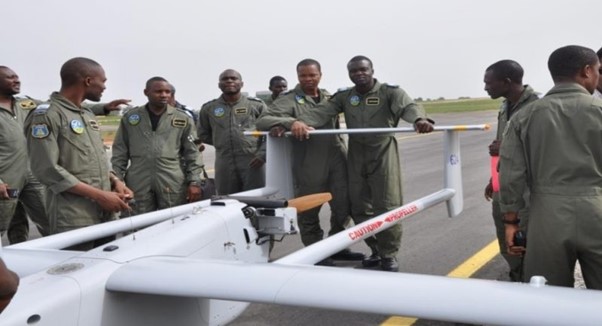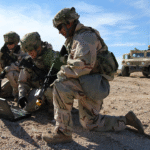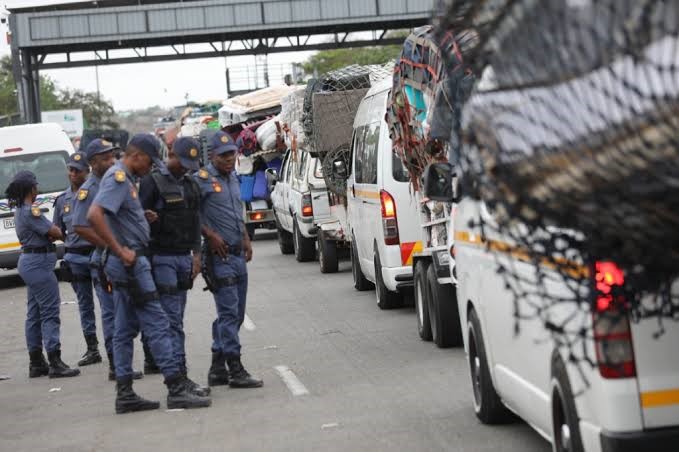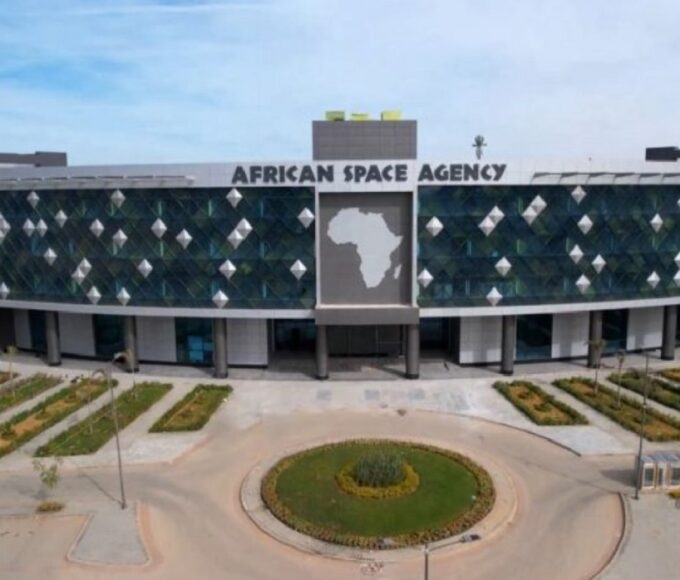Unmanned Warfare: The Future of African Air and Land Defence Systems
Unmanned warfare offers Africa an unprecedented opportunity to level the battlefield.

Unmanned systems are rapidly redefining how African militaries approach reconnaissance, strike capability, border control, and counter-insurgency operations. From drones surveilling Sahelian deserts to unmanned ground vehicles patrolling urban conflict zones, the shift toward autonomous and remotely operated warfare is no longer speculative—it is active, operational, and expanding.
With 28 African countries reportedly fielding military or paramilitary drones as of 2024, unmanned warfare is not only enhancing battlefield effectiveness but also altering doctrines, procurement priorities, and civil-military relations. But this evolution raises questions of strategy, sovereignty, training, and ethical deployment in regions already fraught with asymmetry and instability.
This article explores the current state, capabilities, and future of unmanned warfare in Africa—across air, land, and hybrid theatres.
Why Unmanned Systems Now?
Several strategic imperatives are driving the uptake of unmanned warfare on the continent:
- Asymmetric threats: Insurgent groups, bandits, and militias often operate in terrain and patterns ill-suited for conventional forces.
- Cost-efficiency: Unmanned systems, especially drones, offer a cheaper alternative to manned aircraft or full-armoured deployments.
- Force multiplier effect: UAVs and UGVs allow stretched military forces to extend their surveillance and strike capabilities.
- Reduced casualties: Remote operations limit troop exposure, especially in IED-prone and hostile environments.
According to the 2024 Stockholm International Peace Research Institute (SIPRI) trends report, military drone acquisition in Africa has grown by 74% since 2019, with over 350 documented platforms imported or indigenously produced during this period.
Airborne Unmanned Systems: ISR, Strike, and Swarm Tactics
Nigeria
The Nigerian Armed Forces operate a fleet of CH-3A and CH-4 drones (China), capable of surveillance and air-to-ground precision strikes. These have been deployed extensively in the Northeast against Boko Haram and ISWAP, reportedly conducting over 350 kinetic missions in 2023 alone.
Nigeria is also advancing its indigenous programme. The Tsaigumi UAV, developed in partnership with local defence firms, is already conducting surveillance missions along the Lake Chad Basin.
Morocco
Morocco operates Bayraktar TB2 drones (Turkey), Heron (Israel), and has invested in loitering munitions for deep-strike capability in the Western Sahara conflict zone. A 2023 drone strike in the disputed buffer zone reportedly neutralised a Polisario leadership convoy—a move that underscored the strategic deterrence value of armed UAVs.
Ethiopia
During the Tigray conflict, Ethiopia deployed Wing Loong II UAVs (China) and reportedly Mohajer-6 drones (Iran) to provide real-time battlefield intelligence and conduct surgical strikes. Their use is credited with breaking several rebel supply lines in late 2021 and early 2022.
Unmanned Ground Systems: Early-Stage but Growing
While UGVs (Unmanned Ground Vehicles) are less common, there are signs of experimentation:
- South Africa’s Milkor has developed prototypes for armed remote ground platforms capable of perimeter defence, patrol, and crowd control.
- Egypt’s Military Production Ministry unveiled a wheeled robotic combat unit in 2022, designed for urban operations and reconnaissance.
Such systems are ideal for high-risk environments like border crossings, urban insurgency zones, and explosive ordnance disposal (EOD) operations.
Local Production and Tech Adaptation
African defence firms are increasingly exploring co-production, reverse engineering, and dual-use adaptations to develop domestic unmanned capabilities.
- South Africa’s Denel and CSIR have developed Seeker UAVs and test platforms for AI-enhanced ISR.
- Nigeria’s Defence Space Administration (DSA) is reportedly collaborating with academic institutions on long-endurance drones with satellite control links.
- Ghana, Kenya, and Tunisia are investing in university-led drone development hubs, partly funded by national security budgets.
The challenge remains scalability. Many local UAVs still lack the endurance, payload, and encryption resilience of their foreign counterparts.
Strategic Advantages and Operational Use Cases
Unmanned systems offer a range of tactical and strategic advantages:
- Persistent Surveillance: UAVs provide long-range, long-duration ISR without risking personnel.
- Targeted Strike Precision: Enables surgical attacks, reducing collateral damage in populated areas.
- Border Control and Anti-Smuggling: UAVs are deployed along the Sahel, Libya-Niger corridor, and Somali-Kenyan border.
- Crowd and Riot Control: UAVs and UGVs fitted with tear gas dispensers and surveillance cameras have been trialled in North Africa.
In Algeria and Tunisia, tethered surveillance drones have been deployed at checkpoints and border zones to monitor trafficking activity.
Challenges: Dependence, Ethics, and Doctrinal Fit
Despite their promise, unmanned systems raise serious questions:
- Foreign dependence: 90% of African UAVs are foreign-made, with critical software and maintenance still externally managed.
- Rules of engagement: Few countries have published protocols on drone use in combat—particularly in relation to civilians and international law.
- Training and retention: Drone operations require skilled pilots, analysts, and engineers—roles currently in short supply across many militaries.
- Airspace regulation: Most African states lack comprehensive military UAV traffic management frameworks, raising risks of civilian collisions or misfires.
Additionally, the psychological impact of constant drone presence—particularly in contested regions—has triggered public backlash and trauma complaints in places like Somalia and Burkina Faso.
The Road Ahead: Toward African Unmanned Doctrine
The future of African defence is unmanned—but it must also be unified. Without a continental doctrine on UAV deployment, airspace sharing, data privacy, and ethical oversight, African militaries risk operational fragmentation and reputational harm.
The AU Peace and Security Council has proposed the creation of a Pan-African Centre for Defence Innovation, including a UAV ethics and operations directorate. If realised, it could standardise guidelines, encourage inter-state coordination, and stimulate indigenous R&D.
Snapshot: Unmanned Warfare in Africa (2023–2024)
| Domain | Key Countries | Notable Systems | Use Cases |
| Aerial (UAV) | Nigeria, Morocco, Egypt, Ethiopia | CH-4, Bayraktar TB2, Wing Loong II | ISR, Strike, Border Patrol |
| Ground (UGV) | South Africa, Egypt | Milkor UGV, Egyptian Combat Bot | EOD, Urban Patrol |
| Indigenous R&D | Nigeria, South Africa, Ghana | Tsaigumi, Seeker, academic UAVs | Surveillance, Training |
| UAV Kinetic Missions | 700+ (Nigeria 2023) | Predominantly in Sahel and North Africa | Counterinsurgency, Targeted Strikes |
Toward a Smart and Sovereign Future
Unmanned warfare offers Africa an unprecedented opportunity to level the battlefield. In a continent often outgunned and under-resourced, drones, robotics, and autonomous systems serve as force multipliers. But without investment in doctrine, ethics, and domestic capacity, this technological leap risks becoming a dependency trap.
The future is unmanned—but it must also be African.
Recent Posts
Categories
- Air & Aerospace16
- Border Security15
- Civil Security4
- Civil Wars4
- Crisis5
- Cyber Security8
- Defense18
- Diplomacy19
- Entrepreneurship1
- Events5
- Global Security Watch6
- Industry8
- Land & Army8
- Leadership & Training5
- Military Aviation5
- Military History27
- Military Speeches1
- More1
- Naval & Maritime9
- Resources2
- Security12
- Special Forces1
- Systems And Technology9
- Tech6
- Uncategorized3
- UNSC1
- Veterans6
- Women in Defence9
Related Articles
SYSTEMS & TECHNOLOGY – THE CASE FOR SMART BORDERS IN AFRICA
On the continent of Africa, vast and varied landscape, borders often act...
ByKing Richard Igimoh, Group Editor ALODecember 11, 2025SYSTEMS & TECHNOLOGY – AFRICAN SATELLITE PROGRAMS: STRATEGIC GAME CHANGERS?
Across Africa’s 30 million square kilometers where borders stretch thin and climate...
ByKing Richard Igimoh, Group Editor ALONovember 19, 2025THE EVOLVING CYBERSECURITY FRONTIER IN AFRICA
Africa’s cybersecurity landscape is rapidly transforming as digital adoption surges across the...
ByKing Richard Igimoh, Group Editor ALOSeptember 5, 2025Counterinsurgency in the Age of Social Media: Hashtag Wars and the Battle for Minds
At 2:37 a.m. on a humid night in northern Mozambique, a short,...
ByKing Richard Igimoh, Group Editor ALOAugust 11, 2025












